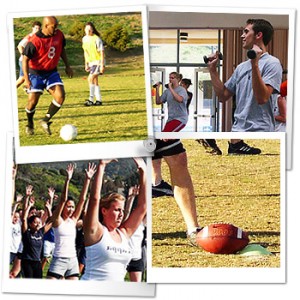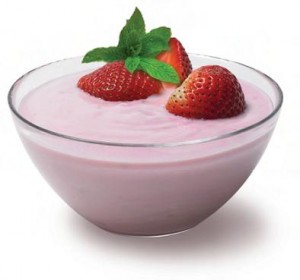
You truly are what you eat…and in the past, the main focus was on the nutrients we might be missing. That’s still important, however, now scientists realize that there’s a lot more to consider when planning our daily diets than just avoiding a deficiency. Healthy eating, nutrition, and other modifiable lifestyle factors can help you reverse the disease process and improve health.
How Lifestyles Affect Your Body’s Nutritional Intake
Despite a wide variety of foods, people today generally eat more but actually get fewer nutrients. Many common aspects of daily life can deplete the body of the nutrients it needs to function properly:
- Drinking—alcohol, coffee/sodas (caffeine)
- Smoking—nicotine
- Medications—statin drugs, corticosteroids, diuretics
- Eating—junk food, refined carbohydrates
- Stress—work, family
- State of Health—illness, injury, intestinal issues, pregnancy
These things can rob you of nutrients by:
- Increasing your need for certain nutrients
- Causing accelerated nutrient loss
- Impairing the absorption of nutrients from food
What You Eat Affects How You Feel
Processed foods and other unhealthy dietary habits can interfere with the dietary signals sent to cells throughout the body, which can lead to premature aging and disease. Addressing unhealthy eating patterns allows you to manage symptoms and even halt or reverse the progression of illness. Eating plans can also be tailored to specific conditions to maximize healthy signals—to help regulate blood sugar or reduce inflammation.
Are 3 balanced meals a day enough to keep you healthy? Food is the preferred source of nutrients to supply you foundational nutrition needs for basic health maintenance. Knowing how to eat to maximize these nutrients will help you stay on a path of reduced disease risk.
The foods you eat can be broken down into 3 categories: fats, proteins, and carbohydrates. They’re all essential to health—but not every food supplies them in a “good” way. Work with your health care provider for suggestions on daily calorie intake and serving size suggestions to match your individual needs and activity level.
Some Fat is Good for You
Fat is a vital nutrient that your body needs for a wide range of biological processes, including growth, healthy skin, and absorption of nutrients. It’s also an important fuel source. Eating the right fats, in moderation, will help you feel full faster, and in turn, decrease your appetite. They can even help lower your risk of heart disease by reducing your levels of total and LDL (“bad”) cholesterol.
- Good. Mono and poly-unsaturated fats and omega-3 fatty acids (from coldwater fish, nuts, flaxseed oil) are healthy.
- Bad. Saturated fat and trans fat (from animal products and processed foods) can be harmful.
- Saturated and trans fats can increase your risk of heart disease by increasing your total and LDL cholesterol.
Protein is More Than Just Meat
Protein is a key component of practically every tissue in your body, including muscle, skin, hair, and other tissues. Proteins manufacture the enzymes and hormones that power digestion, metabolism, and tissue growth and repair.
Protein can be found in all meats and vegetables. Some are “complete” proteins (typically from animals) because they contain all the essential amino acids your body needs to build more protein. Others are “incomplete” proteins (vegetables, nuts) because they lack one or more essential amino acids.
- Good. Lean cuts of meat, white poultry meat, whey protein, soy protein, nuts (in moderation), beans, reduced fat dairy products (or dairy substitutes).
- Bad. Fatty cuts of meat, dark poultry meat, excess cheese or “whole” dairy product consumption, poultry skins.
- Even lean protein sources can be prepared in unhealthy ways—battered, deep fried, or covered in fatty sauces or cheeses.
Carbohydrates: the Key to Healthy Eating
Carbohydrates are important sources of energy and can be found in most foods. Not all carbohydrates are beneficial, so choosing the right carbohydrates is essential.
- Good. Better sources of carbohydrates are whole grains, vegetables, fruits, and beans. These foods are a good source of energy and provide fiber, vitamins, and minerals—as well as phytonutrients that are essential for good health.
- Bad. Refined carbohydrates or sugars (white bread, white rice, pastries, sugary sodas) provide little or no nutritional value.
- Even the best carbs can be prepared in bad ways. Overcooking can deplete nutrients, or they can be covered in cheese, butter, and fatty/sugary sauces that counteract their benefits. Over time, a steady intake of refined carbohydrates can lead to insulin resistance, a harmful condition in which the body can’t properly convert blood sugar into energy. Insulin resistance, in turn, can result in weight gain, low energy levels, diabetes, heart disease, and other health conditions.
Fiber and Water: Filling You Up and Cleaning You Out
Good sources of fiber include bran, beans, brown rice and nuts, and green vegetables (broccoli, asparagus, spinach). Dietary fiber helps:
- Promote healthy insulin and blood sugar response by slowing digestion, which helps to prevent a surge of blood sugar.
- Create a feeling of fullness, helping you control the amount of food you eat.
- Increase bowel motility, helping you empty what your body doesn’t need more regularly.
- Low fiber diets can increase the risk to insulin resistance, digestive discomfort, and more serious intestinal concerns.
Water helps to transport vital nutrients to, and export waste from, our cells. It’s also necessary to moisten the lungs and respiratory tract, lubricate joint surfaces and internal organs, and ensure proper digestion. Like fiber, it can increase the feeling of fullness and aid in toxin removal. So it’s important to make sure you’re getting enough water every day.
“Boosting” Your Healthy Message with Nutritional Supplements
Even if you eat a nutritious diet, you might benefit from nutritional supplementation. Nutritional supplementation not only helps you maintain adequate nutrient levels, it can also help improve your health or manage chronic health conditions.
Be sure to discuss nutritional supplementation with your healthcare provider, especially if you have a health condition or are currently taking medication.
Article written by: metagenics.com
 The sun produces many different kinds of light, and the most likely to injure your eyes are ultraviolet, called “UV rays“. When eyes are overexposed to ultraviolet radiation, the front portion of the eyes may become damaged.
The sun produces many different kinds of light, and the most likely to injure your eyes are ultraviolet, called “UV rays“. When eyes are overexposed to ultraviolet radiation, the front portion of the eyes may become damaged.








